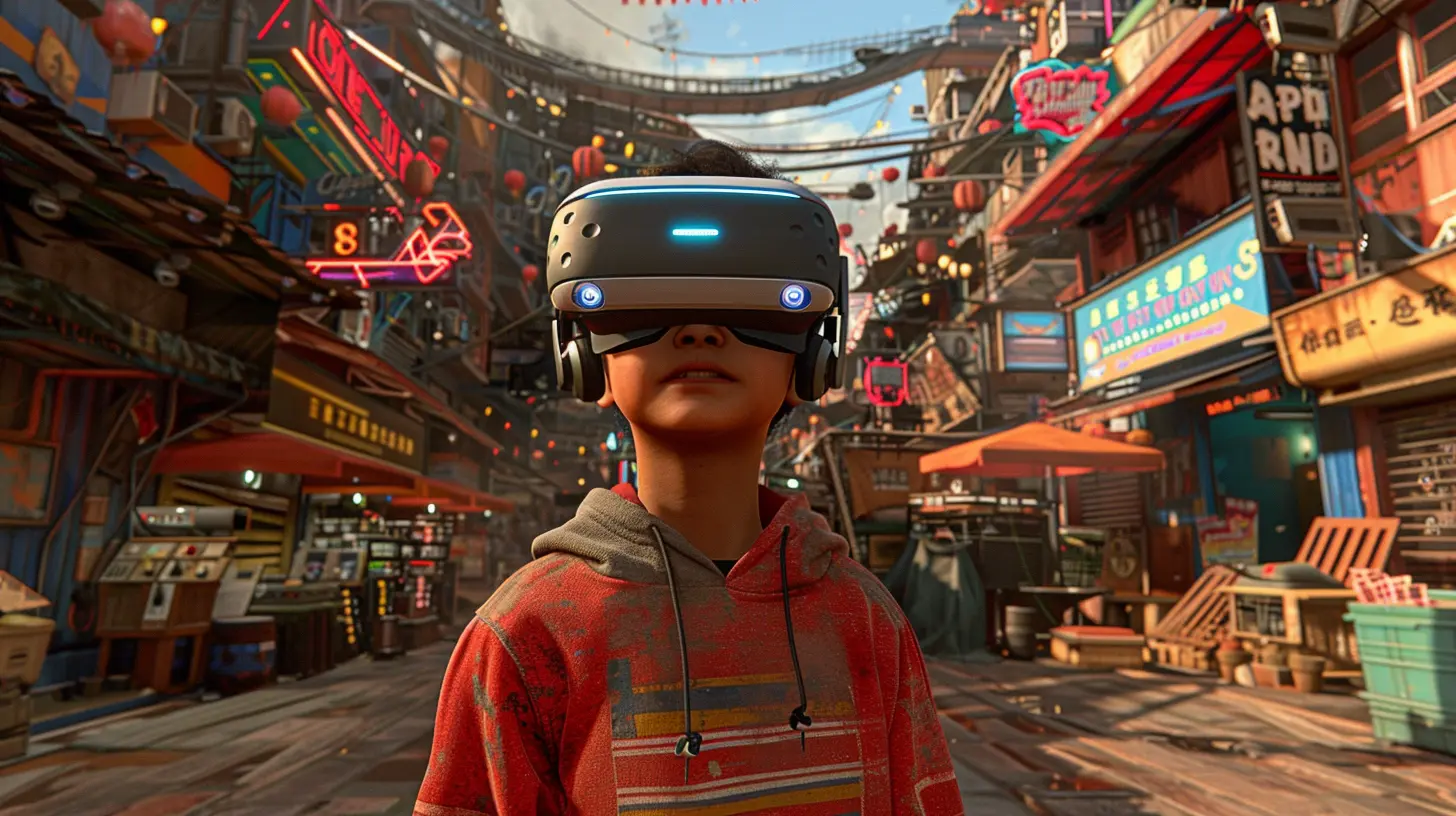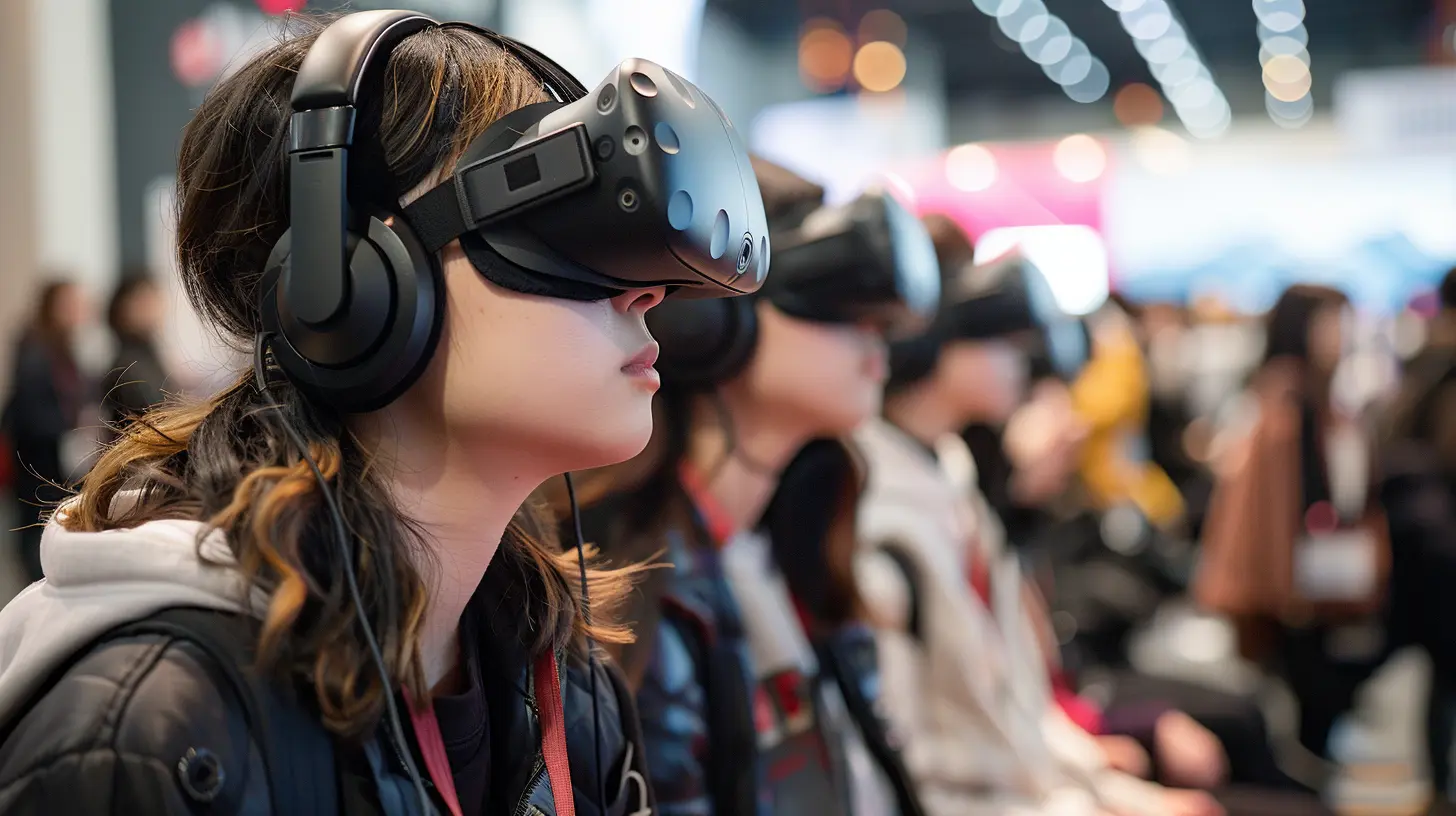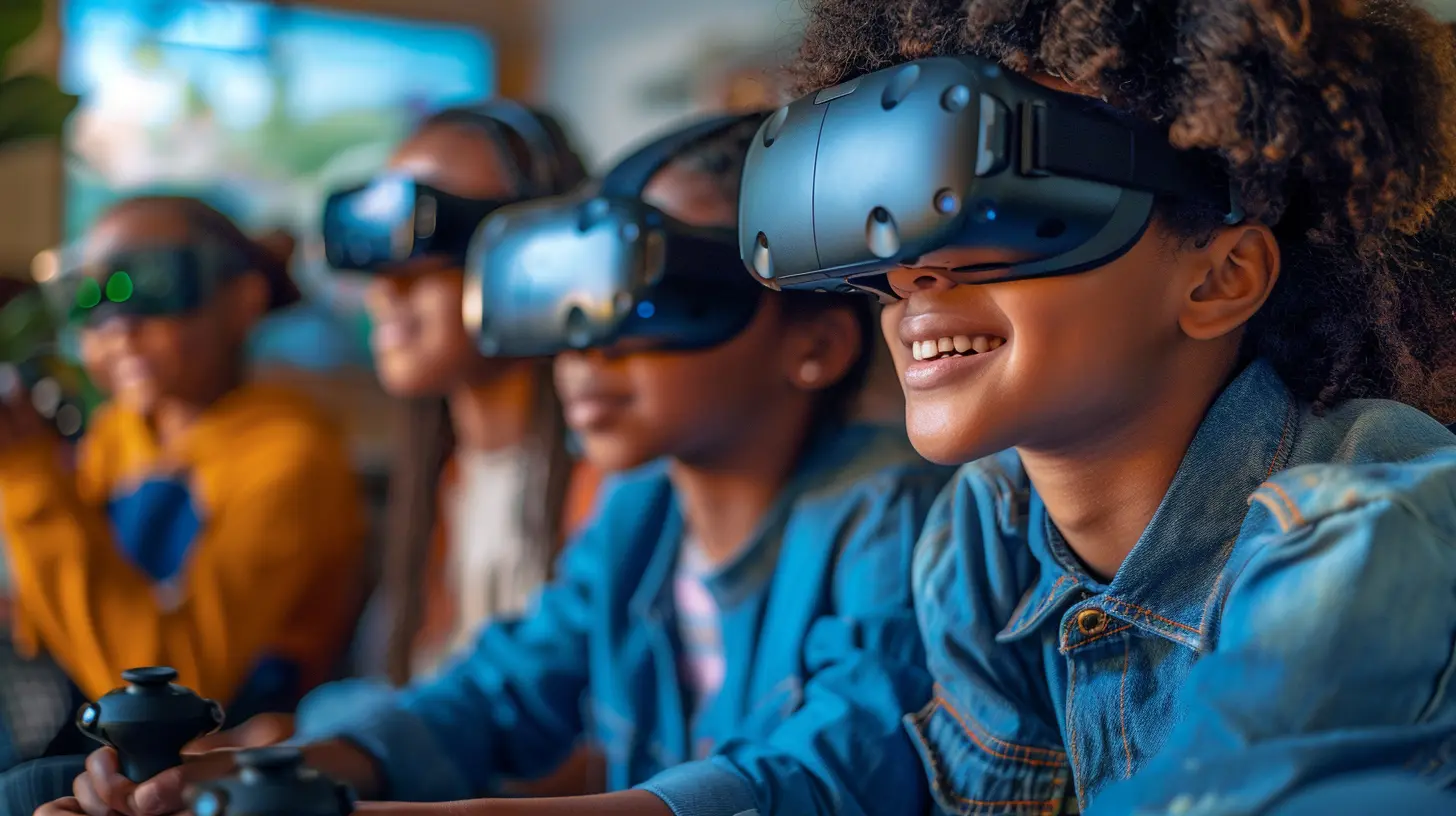Virtual Reality and Accessibility: Making Games for Everyone
29 July 2025
Imagine gearing up for a thrilling VR game—headset on, controllers in hand—but when you dive in, you realize you can't play it the way others can. That bite of exclusion? It’s real, and for many gamers with disabilities, it’s a regular experience. But guess what? The gaming world is changing.
We're entering a golden age of gaming where inclusivity isn't just a buzzword—it's a mission. Virtual Reality (VR), once considered a luxury for tech enthusiasts, is becoming more accessible. But the real question is: are we making VR games truly accessible for everyone?
Let’s dive into the world where pixels meet purpose and explore how VR and accessibility are coming together to create games that everyone can play, enjoy, and love.
Why Accessibility in VR Matters So Much
Let’s face it—VR is one of the most immersive and exciting gaming experiences out there. You're not just pressing buttons; you're inside the action. From exploring alien planets to fighting dragons in fantasy realms, VR games completely change how we experience virtual worlds.But here’s the catch: if these virtual adventures aren’t built with all players in mind, we’re unintentionally shutting the door on a huge part of our gaming community. Gamers with physical, auditory, visual, and cognitive disabilities often find themselves facing unnecessary challenges in VR spaces.
It's not just about playing the game—it’s about belonging in the game.
Breaking Down the Barriers: What Accessibility Means in VR
So, what exactly does accessibility mean in the world of VR?Accessibility means designing experiences that can be used by as many people as possible, regardless of their abilities or disabilities. In VR, that covers a lot of ground—because it's not just about a controller and a screen anymore. It's head-mounted displays, spatial audio, motion tracking, and sometimes even haptic feedback.
Here are some key challenges people face in VR environments:
- Mobility Issues – Not everyone can stand, walk, or use both hands.
- Visual Impairments – Poor contrast, small text, or lack of subtitles can stop someone from engaging.
- Hearing Impairments – Without captions or audio cues, players with hearing challenges lose crucial context.
- Cognitive Disabilities – Fast-paced instructions or complex interfaces can be overwhelming.
- Motion Sickness – Not a disability, but a common issue that affects many VR users—and yes, it counts.
When developers don't plan for these, the result is a virtual world that some folks can’t fully enjoy—or even access at all.
The Good News: VR Accessibility Is Improving
Here’s where it gets inspiring. Game developers, studios, and tech giants are waking up to the need for more inclusive VR gaming. They’re taking the time to understand what different players need and creating tools and settings that make VR more accessible.Some companies are even consulting with disabled gamers during development—because who better to help build a better experience than the people using it?
Let’s take a closer look at how accessibility is being built into the VR experience.
Features That Are Game-Changers (Literally)
There are a growing number of features being added to VR platforms to improve accessibility. Here are some shining examples:1. One-Handed and Seated Play Modes
Not every gamer can play standing up or using both hands. One-handed modes allow players to control both movement and interaction using a single controller. Seated play options are also becoming standard, offering more comfort and flexibility.Games like Half-Life: Alyx have leaned into this, with flexible control schemes and seated experiences built-in.
2. Customizable Controls
Let’s face it, default controls can be a nightmare if you’ve got limited mobility or unique needs. Customizable control mapping is a huge deal—it lets players tailor inputs to what works for them. VR titles that allow full customization are breaking down access barriers one control at a time.3. High Contrast and Text-to-Speech Options
For visually impaired users, readable text and distinguishable UI elements are critical. More games are adding high-contrast modes, scalable text, and descriptive audio. It's a small change with a massive impact.Some games even include text-to-speech for in-game menus and surroundings, which is pretty awesome.
4. Subtitles and Visual Sound Indicators
Subtitles are becoming more common in VR, with adjustable font sizes, background shading, and speaker identification. For players who are deaf or hard of hearing, visual sound indicators—like directional arrows or visual pulses for footsteps or gunshots—can offer rich feedback that audio alone can't provide.5. Slow Mode and Game Speed Adjustments
Sometimes, the pace of a game can be overwhelming. This is especially true for people with cognitive or sensory processing differences. Being able to slow down gameplay or adjust time-based events gives players the space to fully enjoy the experience without stress.Real Stories: Accessibility in Action
Let’s put a human face to this. Meet Jordan, a lifelong gamer who lost mobility in one arm after an accident. For years, he felt like VR was out of reach. But thanks to a new update in one of his favorite games offering a fully one-handed mode, he’s back in the game.Or take Lisa, who has a visual impairment. She uses high-contrast settings and audio cues to navigate her VR landscapes. With these tools in place, she fully immerses herself in fantasy role-play games and social VR spaces.
These stories aren’t rare. Every time a barrier is removed, a new player gets to join the fun. And that’s the beauty of it.
The Role Developers Play: It Starts at the Drawing Board
Creating accessible VR games doesn’t start after the game is built—it starts from day one.When developers include accessibility in the planning stages, the results are way better. It's like laying down a ramp while building the house instead of trying to add one after the foundation is set.
Here’s what developers can do:
- Conduct playtests with people who have disabilities
- Use accessibility checklists (like the XR Accessibility Guidelines)
- Keep interfaces simple and avoid assumptions about movement or ability
- Offer multiple ways to accomplish the same task (voice, gesture, controller)
- Allow full customization of controls, input sensitivity, and UI preferences
If studios tackle these actions head-on, we’ll see a massive shift toward equal access in VR gaming.
Hardware Has to Keep Up Too
Software isn't the only thing that needs to adapt. Hardware plays a major role in accessibility. VR gear—headsets, controllers, sensors—needs to be more flexible and modular.Here are a few recent improvements:
- Lighter headsets: Easier on the neck and more comfortable for longer sessions.
- Adjustable straps and padding: Helpful for wheelchair users or those with neck or spine conditions.
- Alternative input devices: Mouth-controlled joysticks, eye tracking, and adaptive switches give users more options.
- Inside-out tracking: Eliminates the need for external sensors, making setups more straightforward and less physically demanding.
When hardware becomes more user-friendly, entire new communities can join in the fun without frustration.
The Social Side of VR: Inclusion in the Metaverse
VR isn’t just about solo adventures—it’s also about hanging out with friends, joining communities, and participating in shared experiences. Social VR platforms like VRChat, AltspaceVR, and Horizon Worlds are like the virtual parks and cafés of the future.But what kind of world are we building if some people can't access these spaces?
Adding features like speech-to-text, avatar customization for physical disabilities, and gesture alternatives helps ensure all players can fully express themselves and connect with others. After all, gaming isn’t just an escape—it’s a shared journey.
Looking Ahead: The Future of VR Accessibility
The path forward is clear: more inclusivity, more customization, more empathy.As developers, players, hardware makers, and advocates continue to raise their voices, VR gaming will evolve into a space where no one feels left out. We still have work to do, but progress is happening.
Here’s what we can hope to see next:
- AI-powered personalization: VR systems that adapt to user needs on the fly.
- Universal accessibility APIs: Making it easier for devs to plug in accessibility features.
- Community toolkits: Open-source tools made by and for gamers to enhance accessibility.
And you know what? Every step we take toward VR accessibility makes games better for everyone. Features meant for disabled players often make games easier, more customizable, and more enjoyable for all kinds of players.
What You Can Do
Thinking, “Cool, but how can I help?” Glad you asked!- If you're a gamer, speak up—ask for accessibility, support inclusive games.
- If you're a dev, bake accessibility in from the start.
- If you're a streamer or influencer, spotlight accessible titles and creators.
- And if you're someone with a disability—keep sharing your story. Your voice shapes the future of gaming.
Final Thoughts: Let’s Build Worlds Where Everyone’s Invited
Gaming is about stepping into someone else’s shoes—or dragon claws, or space boots—but how can we explore new worlds if we can’t step through the door?Virtual Reality has the power to let us fly, dance, fight, and feel in ways regular gaming can’t touch. But to unlock that power for everyone, we need to commit to accessibility at every level.
Because when we remove the barriers, we don’t just let people play—we let them belong. And that’s what gaming should be all about.
all images in this post were generated using AI tools
Category:
Virtual RealityAuthor:

Whitman Adams
Discussion
rate this article
2 comments
Kismet McFarland
This article highlights a crucial conversation about inclusivity in gaming. Virtual reality offers unique opportunities, but developers must prioritize accessibility features to ensure everyone can enjoy these experiences. It's essential for the industry to champion diversity in game design.
October 30, 2025 at 4:29 PM

Whitman Adams
Thank you for your insightful comment! I completely agree—prioritizing accessibility and diversity in game design is vital for creating inclusive VR experiences that everyone can enjoy.
Alexander Snyder
This article highlights the crucial role of accessibility in virtual reality gaming. By prioritizing inclusive design, developers can ensure that everyone, regardless of ability, can experience the joy and immersion VR has to offer.
July 31, 2025 at 2:49 AM

Whitman Adams
Thank you for your insightful comment! Accessibility in VR is indeed vital for creating inclusive gaming experiences for all.


